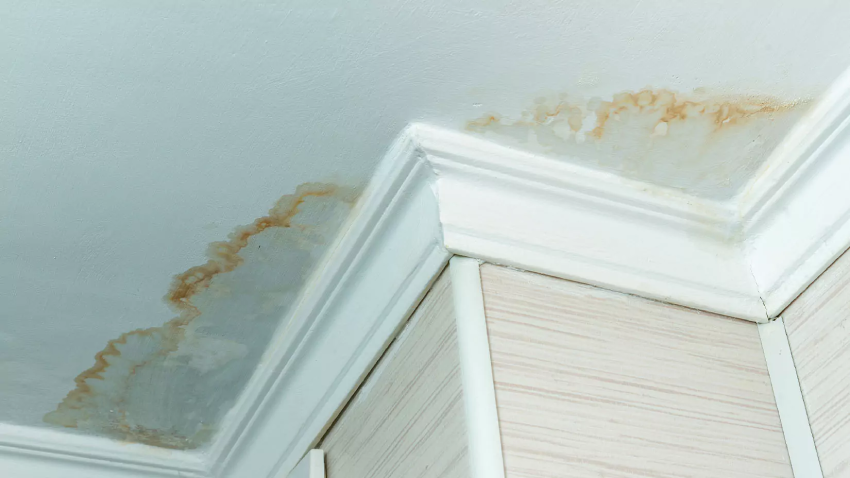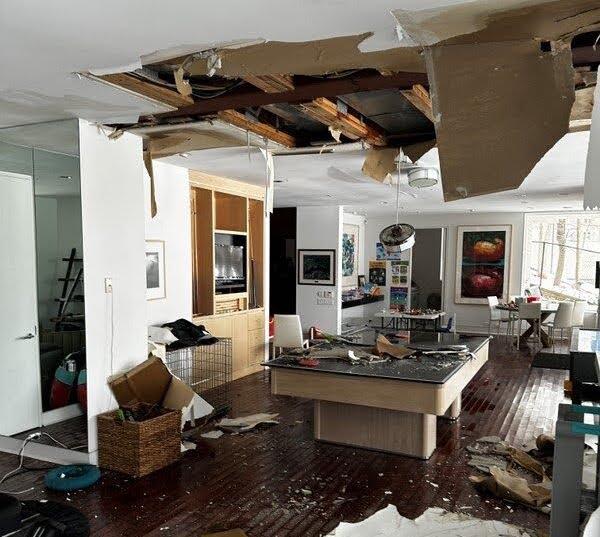Water Damage Restoration Specialists Ready to Fix Any Issue Fast
Wiki Article
The Refine of Water Damage Cleaning: Guaranteeing Your Home Is Recovered Efficiently
Water damages can be a daunting obstacle for homeowners, requiring a meticulous and organized cleanup procedure to recover safety and security and performance. damage restoration services. Following this, effective water removal methods play a crucial duty in reducing further injury.Evaluating the Damage
Upon finding water damages, the initial step is to completely examine the degree of the impact. This first assessment is crucial, as it aids figure out the needed actions for efficient cleaning and repair. Begin by evaluating the impacted areas, including wall surfaces, ceilings, floors, and personal belongings, to recognize the source of the water invasion, whether from flooding, leakages, or condensation.Documenting the damage is essential for both insurance policy claims and preparing repair initiatives - damage restoration services. Use photographs and composed notes to catch the intensity of the damage, keeping in mind any afflicted architectural elements and products. Pay unique focus to areas that may not be right away visible, such as behind walls and under rugs, as concealed moisture can result in more problems, consisting of mold and mildew development
Additionally, analyze the timeline of the water exposure. The longer the materials continue to be damp, the greater the potential for damage. Comprehending the duration of exposure will notify the necessity of removal efforts. Ultimately, an extensive analysis lays the foundation for an effective water damages cleanup process, guaranteeing that all impacted locations are dealt with successfully and completely.
Water Extraction Techniques

Professionals typically use submersible pumps for bigger quantities of water, which can rapidly reduce flooding in cellars or various other affected areas. For smaller sized quantities, wet/dry vacuums are usually utilized to extract recurring wetness from carpets and tough surfaces. In addition, using mobile extractors enables for targeted removal in constrained spaces or areas with delicate products.
In instances of infected water, such as sewage or floodwater, progressed removal methods may include making use of biohazard devices to ensure safety and security and conformity with health guidelines. High-powered extraction tools are crucial in minimizing water retention in architectural materials, which can bring about mold growth and architectural degeneration if not addressed immediately.
Inevitably, the effectiveness of water removal strategies plays a critical duty in the overall success of the water damage clean-up procedure, preparing for subsequent repair initiatives.
Drying and Dehumidification
Once standing water has been properly drawn out, the next critical stage in the water damage cleanup procedure is drying and dehumidification. This step is vital to prevent additional damage and mold and mildew growth, which can occur within 24 to two days in moist settings.To attain effective drying out, specialized tools such as industrial-grade air movers and dehumidifiers is employed. Air movers distribute air across wet surfaces, improving evaporation rates, while dehumidifiers decrease humidity levels in the air, promoting a favorable atmosphere for drying. The combination of these tools guarantees that wetness is extracted from walls, furnishings, and floors, allowing them to dry thoroughly.
It is very important to monitor the drying out procedure carefully. Experts commonly utilize dampness meters to assess the dampness web content in different materials, guaranteeing that all affected locations reach acceptable dry skin degrees. This precise method aids to stop surprise moisture pockets that can cause architectural damages or harmful mold and mildew growth.

Cleaning and Sanitizing
After the drying out and dehumidification phase is full, the next essential action in water damage cleaning is cleaning up and disinfecting the impacted locations. This process is important to stop the development of mold, microorganisms, and other virus that flourish in wet atmospheres.The cleansing phase typically includes getting rid of any particles, dirt, and contaminants from surfaces using specialized cleaning representatives. For difficult surface areas, a combination of soap and water or industrial cleansing products is usually used. Soft products, such as upholstery and rugs, might require much more comprehensive cleansing methods, including heavy steam cleansing or deep extraction strategies, to make sure detailed sanitation.

Sterilizing adheres to cleansing, utilizing EPA-approved anti-bacterials to get rid of hazardous microorganisms. This action is crucial, particularly in areas that might have entered into call with floodwaters or sewer, as these resources can pose serious health dangers.
In addition, it is essential to deal with any type of staying odors, which may need making use of odor neutralizers or advanced techniques like ozone treatment. Proper cleaning and sanitizing not only restore the safety and security and health of your home but also prepared for successful restoration and repairs in water damage succeeding phases of the water damages cleaning procedure.
Repair and Repair Work
Once the evaluation is full, remediation efforts can start. In addition, flooring may call for comparable attention, depending on the degree of water exposure.
It is vital to involve skilled repair specialists during this procedure, as they have the experience to handle complicated repair services properly. They can help mitigate prospective future concerns, such as mold and mildew development or architectural instability, hence ensuring a habitable and safe living setting. Ultimately, effective remediation and repair work bring back the home's stability and boost its overall worth.
Verdict
In conclusion, the procedure of water damages clean-up is essential for recovering a home to its pre-damage problem. Each stage, from analyzing the damages to carrying out efficient water extraction techniques, followed by comprehensive drying, disinfecting, and essential repair services, plays a crucial role in guaranteeing security and compliance with building criteria. Efficient execution of these actions not only reduces immediate damages however also improves the long-term stability and value of the property.Water damages can be a daunting obstacle for home owners, necessitating a careful and organized cleanup procedure to recover safety and security and performance. Eventually, a detailed evaluation lays the foundation for an effective water damage clean-up procedure, making sure that all affected locations are attended to properly and extensively.
Efficient water removal methods are essential in minimizing damage and preventing more problems complying with a water intrusion event.In conclusion, the procedure of water damages cleaning is important for recovering a home to its pre-damage problem. Each phase, from evaluating the damage to implementing efficient water extraction methods, followed by thorough drying, sanitizing, and required repair services, plays an important function in guaranteeing security and compliance with building standards.
Report this wiki page